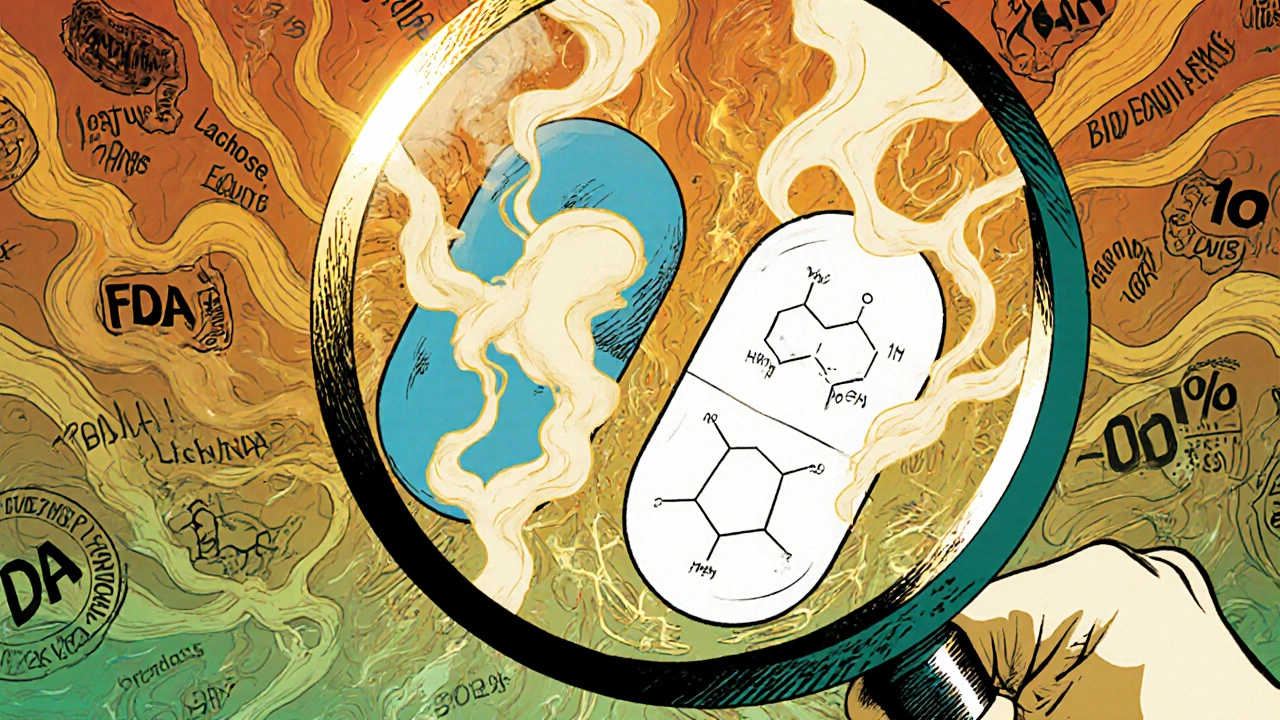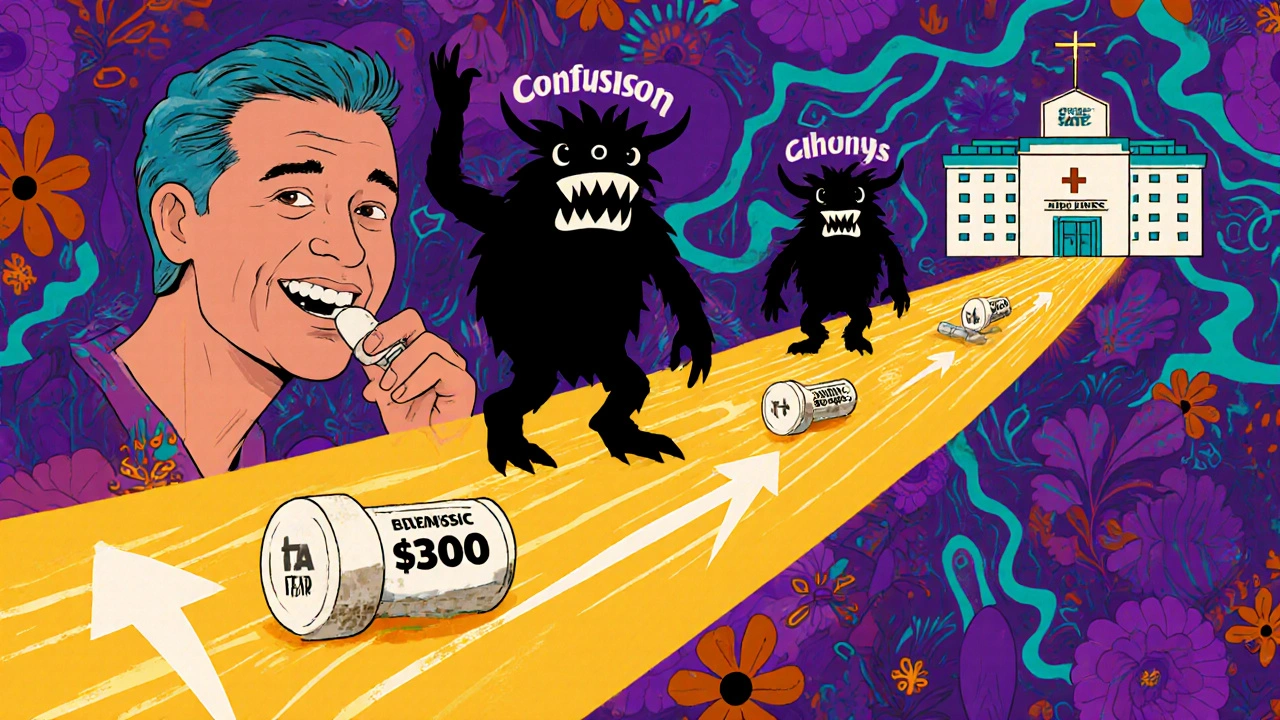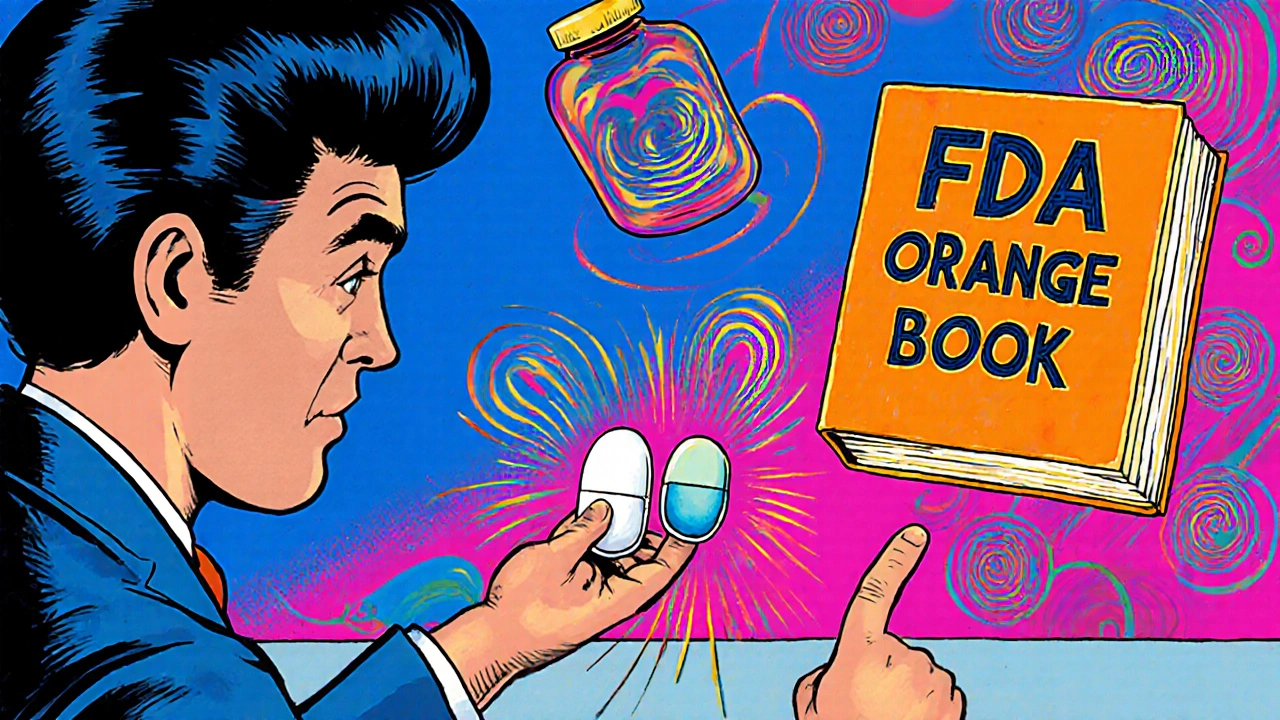When you pick up a prescription and see a pill that looks completely different from what you’ve been taking, it’s normal to pause. Generic medications are not a compromise-they’re the same medicine, just cheaper. But without clear counseling, that difference in appearance can spark fear, confusion, or even lead you to stop taking your drug altogether.
Why Your Generic Looks Different
Generic drugs must contain the exact same active ingredient, strength, dosage form, and route of administration as the brand-name version. That’s a legal requirement enforced by the FDA. But the color, shape, size, or even the imprint on the pill? Those can-and often do-change. That’s because inactive ingredients like dyes, fillers, or binders are not required to match. These don’t affect how the drug works, but they can make your pill look like a totally different medicine.One patient told me they stopped taking their generic blood pressure pill because it was white and oval instead of blue and round. They thought the pharmacy gave them the wrong drug. That’s not rare. In fact, a 2019 survey found 31% of patients felt confused when their medication changed appearance. The key is knowing: looks don’t matter. Chemistry does.
What Pharmacists Are Required to Tell You
Under the Omnibus Budget Reconciliation Act of 1990 (OBRA '90), pharmacies that bill Medicaid must provide counseling when dispensing generics. That means your pharmacist is legally required to explain:- That this is a generic version of your brand-name drug
- That it contains the same active ingredient and works the same way
- How to take it-dose, timing, with or without food
- Potential side effects
- Any differences in inactive ingredients that could matter (like lactose or gluten)
They’re also supposed to check that you understand. This is called the “teach-back” method. Instead of just saying, “Do you have any questions?” they’ll ask you to explain back in your own words how you’ll take the medicine. If you say, “I take one in the morning,” and they reply, “Great-will you take it with food or on an empty stomach?” you know they’re doing their job.
Therapeutic Equivalence Isn’t a Guess-It’s a Science
The FDA doesn’t just approve generics because they “seem similar.” They require proof. Every generic must be bioequivalent to the brand-name drug. That means the amount of active ingredient your body absorbs must be within 80-125% of the brand. That’s not a wide range-it’s tight. It’s like matching the fuel efficiency of two cars: one gets 30 mpg, the other must get between 24 and 37.5. Both will get you to the same place.That data is published in the FDA’s Orange Book, officially called Approved Drug Products with Therapeutic Equivalence Evaluations. If your pharmacist mentions the Orange Book, they’re not showing off-they’re pointing to the official source that proves your generic is just as effective. In 2018, a study of 12.7 million patients found that switching to generics improved medication adherence by 8.2%. Why? Because people stuck with their meds longer when they cost less.

When You Should Be Extra Careful
Not all drugs are created equal when it comes to substitution. Some have a narrow therapeutic index (NTI)-meaning there’s very little room between a dose that works and one that’s dangerous. These include:- Warfarin (blood thinner)
- Levothyroxine (thyroid hormone)
- Phenytoin (seizure medication)
- Lithium (mood stabilizer)
In 24 states, pharmacists can’t automatically swap these generics without your doctor’s approval. Even then, some patients report feeling different after switching-even though lab tests show no change in blood levels. Why? It could be the inactive ingredients. One patient on Drugs.com had a reaction because the generic contained lactose, and they were allergic. The brand didn’t. That’s why your pharmacist should ask: “Do you have any allergies to dyes, gluten, or lactose?” If they don’t, ask them.
What to Say When You’re Not Sure
You’re not being difficult if you ask questions. In fact, the best outcomes happen when patients speak up. Here are five simple things to say when you pick up a generic:- “Is this the same as my old pill?”
- “Will this work the same way?”
- “Are there any ingredients here I should avoid?”
- “Can you show me the FDA’s rating for this?”
- “Can you explain how to take it again?”
One patient, SarahJ, posted on PatientsLikeMe: “My pharmacist took 10 minutes to explain how generics work and showed me the FDA Orange Book entry. I switched and saved $300 a month-no difference in how I felt.” That’s the goal: confidence, not confusion.

Why This Matters for Your Health-and Your Wallet
Generic drugs made up 90.8% of all prescriptions filled in the U.S. in 2021. That’s over 8 billion prescriptions. And they saved the healthcare system nearly $2 trillion between 2009 and 2019. But savings only happen if people actually take their meds. A 2020 study found pharmacies using standardized counseling scripts saw a 15% increase in adherence. That means fewer hospital visits, fewer complications, and less long-term damage from untreated conditions.And it’s not just about money. When you understand why your generic is safe, you’re less likely to skip doses, stop taking it, or switch back to a more expensive brand. That’s better for your health-and it’s better for everyone who pays for healthcare.
What’s New in 2025
In 2022, the FDA updated the Orange Book to include more detailed therapeutic equivalence codes. Pharmacists now use “AB” ratings to clearly show which generics are interchangeable. CMS also updated rules in late 2022 to require counseling for non-English speakers in the 100 most common languages. Some states are even testing video counseling-patients who watched a short video about generics were 37% more likely to accept the substitution.And if you’re ever unsure, remember: your pharmacist isn’t just filling a prescription. They’re your last line of defense before you take that pill. Don’t be shy. Ask. Double-check. Make sure you leave knowing you’re getting the same medicine-just at a lower price.
Are generic medications really as effective as brand-name drugs?
Yes. The FDA requires generics to have the same active ingredient, strength, dosage form, and route of administration as the brand-name drug. They must also prove they’re bioequivalent-meaning your body absorbs them at the same rate and to the same extent. Studies show generics work just as well in 99.5% of cases. The only differences are in inactive ingredients like color or fillers, which don’t affect how the drug works.
Why does my generic pill look different?
Generic manufacturers can’t copy the exact appearance of brand-name pills because of trademark laws. So they change the color, shape, or imprint. But the active ingredient is identical. If you’re unsure, ask your pharmacist to show you the FDA’s Orange Book entry for your drug-it lists all approved versions, including generics.
Can generic medications cause side effects the brand doesn’t?
The active ingredient causes the main effects-both therapeutic and side effects. But sometimes, inactive ingredients like lactose, gluten, or dyes can trigger reactions in sensitive individuals. If you have allergies or intolerances, always ask your pharmacist if the generic contains anything different from your brand. This is especially important for medications like thyroid hormone or blood thinners.
Should I always choose the generic version?
For most people, yes. Generics are just as safe and effective, and they cost significantly less. But for drugs with a narrow therapeutic index-like warfarin or levothyroxine-your doctor may prefer you stay on one version. Always check with your prescriber if you’re unsure. Your pharmacist can help you understand if substitution is safe for your specific medication.
What if I feel different after switching to a generic?
It’s rare, but some people report feeling different after switching. This can happen due to changes in inactive ingredients or because your body is used to one formulation. Don’t stop taking the medication. Call your pharmacist or doctor. They can check if it’s a known issue with that specific generic, or if you need to switch back. Many times, switching to a different generic brand (not the original brand) solves the problem.
What to Do Next
If you’re picking up a generic for the first time, don’t just grab it and go. Take two minutes to talk with your pharmacist. Ask the five questions listed above. If they don’t explain it clearly, ask again. If they’re rushed, ask to speak with them privately. You’re not being difficult-you’re being smart.And if you’ve had a bad experience with a generic in the past, don’t assume all generics are the same. Talk to your pharmacist about which version you took, and ask if a different manufacturer’s version might work better. There are often multiple generics for the same drug, and they can vary slightly in how they’re made.
Generic drugs aren’t second-rate. They’re the result of strict science, tight regulation, and years of real-world use. When you understand that, you take control-not just of your health, but of your healthcare costs too.


Robert Merril
November 18, 2025 AT 00:09So let me get this straight the government says its the same pill but if it looks different i shouldnt panic because chemistry right but what if my pill is now shaped like a tiny UFO and i swear it tastes like burnt plastic i mean what even is this anymore
Noel Molina Mattinez
November 18, 2025 AT 12:12Pharmacists dont tell you enough and you dont ask enough people die from this
Roberta Colombin
November 18, 2025 AT 14:55It’s so important to remember that everyone deserves clear information about their health. Even if the pill looks different, the medicine inside is the same. A simple conversation with your pharmacist can make all the difference. Thank you for sharing this.
Dave Feland
November 19, 2025 AT 02:31Let’s be frank-the FDA’s bioequivalence standards are a farce. An 80-125% absorption window is not precision, it’s a loophole. The Orange Book is a bureaucratic fiction designed to placate the public while Big Pharma quietly profits from generic monopolies. I’ve seen patients regress after switching. Lab tests don’t capture subjective neurochemical shifts. This isn’t science-it’s corporate sanitization of pharmacology.
Ashley Unknown
November 20, 2025 AT 16:07Okay so imagine this you’re on levothyroxine for 12 years and your pill goes from a tiny blue oval to a big white triangle and suddenly you’re crying for no reason and your hair is falling out and you can’t sleep and your cat stares at you like you’re a ghost and you think maybe the government swapped your soul with a placebo and then you find out the generic has lactose and you’re mildly allergic but no one told you because the pharmacist was on their third coffee and now your thyroid is a political statement and your insurance won’t cover the brand because ‘it’s not medically necessary’ but how is it not medically necessary when you feel like you’re slowly turning into a zombie and your doctor says ‘it’s just the placebo effect’ but what if it’s not what if it’s the dye what if it’s the binder what if the whole system is rigged and you’re just a test subject in a drug company’s spreadsheet
Georgia Green
November 22, 2025 AT 04:00I used to panic every time my pill changed shape. Then I started asking my pharmacist to show me the Orange Book. Turns out, the generic I got last month was made by the same company as my brand. Same factory. Just different label. Saved me $200. Still takes it like clockwork.
Christina Abellar
November 23, 2025 AT 17:44Good reminder to ask questions. Pharmacists are there to help.
Eva Vega
November 23, 2025 AT 18:59Therapeutic equivalence is predicated on pharmacokinetic parameters-specifically AUC and Cmax within the 80–125% confidence interval. However, polymorphic variations in CYP450 metabolism may yield inter-individual bioavailability discrepancies that are not captured in population-level bioequivalence studies. Consequently, NTI drugs warrant individualized substitution protocols, particularly in geriatric or polypharmacy cohorts where pharmacodynamic sensitivity is amplified.